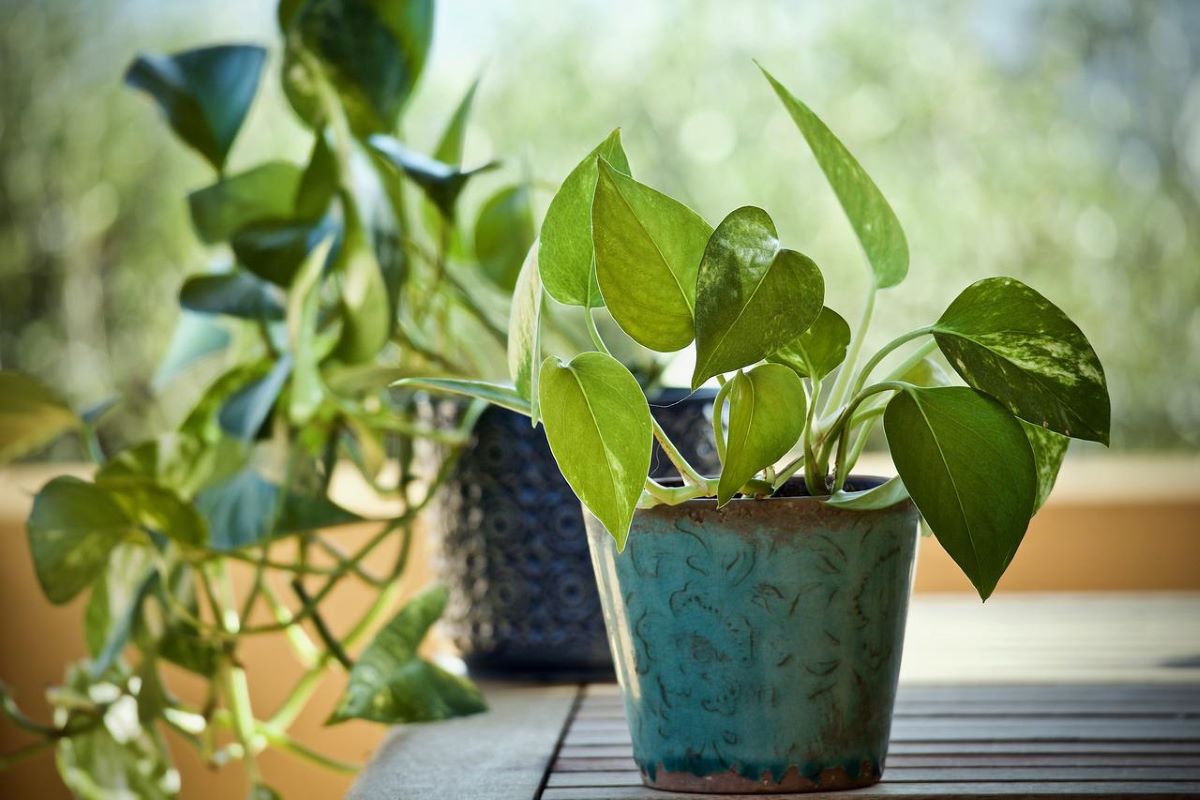
The pothos is one of the most used evergreen climbers to decorate the interior of a home. It has a very high ornamental value, which means that it is a beautiful plant, ideal for embellishing almost any corner of our home. Its care is not very complicated, since in fact it is very adaptable; Nevertheless, when you don't feel comfortable you can have yellow leaves.
There are several reasons why your health can deteriorate to the point of losing your natural green color. But, Is there anything we can do to recover a pothos with yellow leaves? The short answer is yes, but depending on how it is, it will be more or less easy to achieve.
The pothos receives a lot or little water
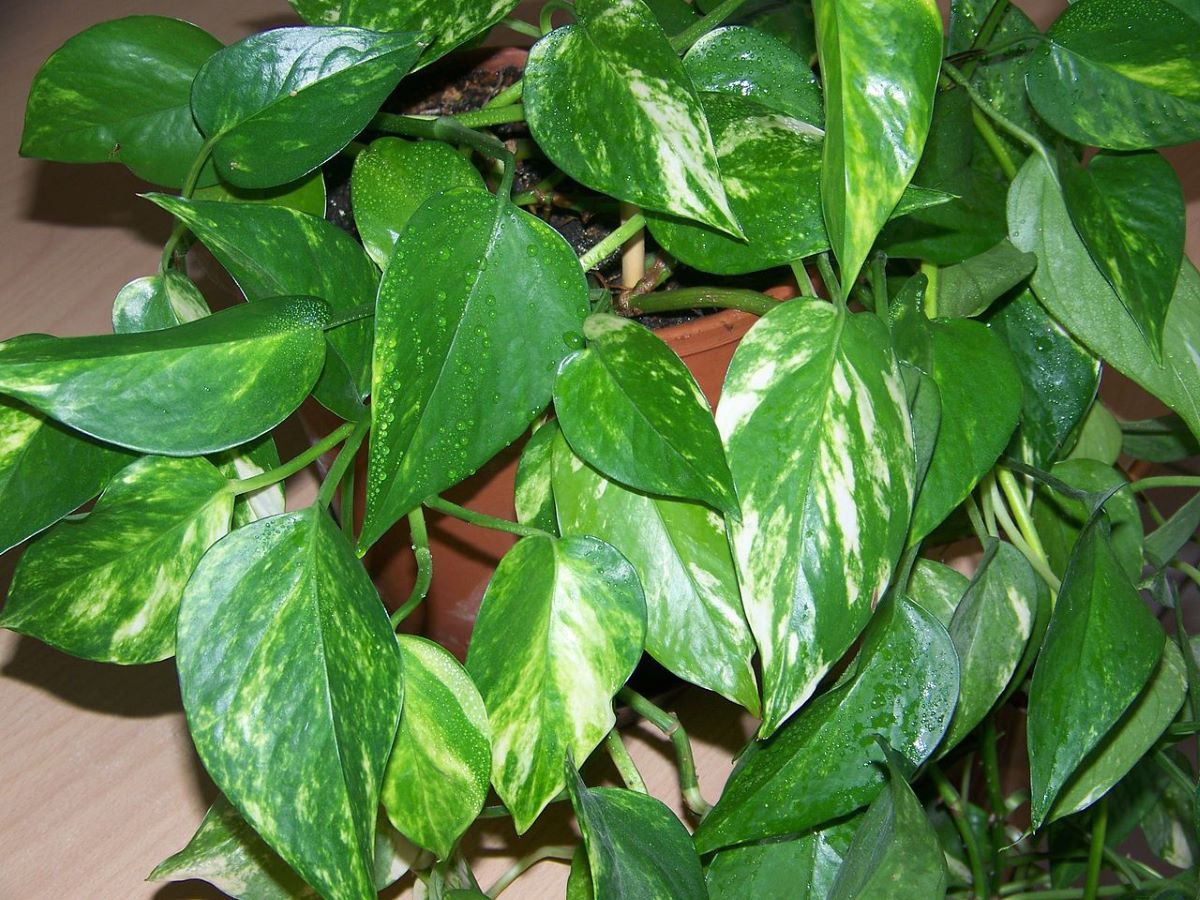
Image – Wikimedia/Asabengurtza
Irrigation is… irrigation. It is what you have to do if you want your pothos to survive, but it is not easy to control it. However, what you should never do is see the dry land and think that the plant needs water. That is the first thing to avoid, because it is actually normal for that most superficial layer to be dry, since it is the one that is most exposed.
Therefore, To know if we have to water or not, we must introduce a stick to the bottom, and if when we take it out we see that a lot of soil has adhered to it, then we will not water, since it will still be very wet. If our plant is still small, we can take the pot before and after watering: we will notice that the soil weighs much less when it is dry than when it is wet, so with this we will know when it is time to rehydrate our pothos.
Now, how to identify the symptoms of lack or excess of watering in this plant? Very easy:
- Excess irrigation: If you're getting more water than you need, we'll see older leaves turn yellow, then brown, from the tips back.
- Lack of irrigation: if, on the other hand, it is thirsty, the leaves that will turn yellow first will be the newest, since they are the ones that require the most water to complete their development.
¿Qué se puede hacer? In the first case, we will have to stop watering for a few days. You have to let the soil dry, but we will help you by taking the plant out of the pot and wrapping the earthen bread or root ball with one or two layers of absorbent paper. If we see that it gets wet quickly, we will remove it and put a new one. Then, we will leave the plant in a room where there is a lot of light for one night. The next day, we will proceed to plant the pothos in a new pot, clean, with new soil.
In the second, we will only have to do one thing: hydrate the plant. To do this, we will submerge the pot in water and leave it like that for a while. After about 30 minutes, we will check if when we pick up the pot it weighs more than when we submerge it, and if so, we will take it out of the water; if not, we will leave it a little longer. And from then on, we will have to water more frequently.
But, how often should the poto be watered? The truth is that it can withstand short periods of drought well, but flooding can cause death by rotting its roots. So, we recommend rehydrating it, more or less and depending on the temperatures, every 4 days during the summer, and every 8 to 10 days the rest of the year. Whenever the time comes, we will pour water into the soil, until it comes out through the drainage holes of the container.
Do you have any pest or disease?
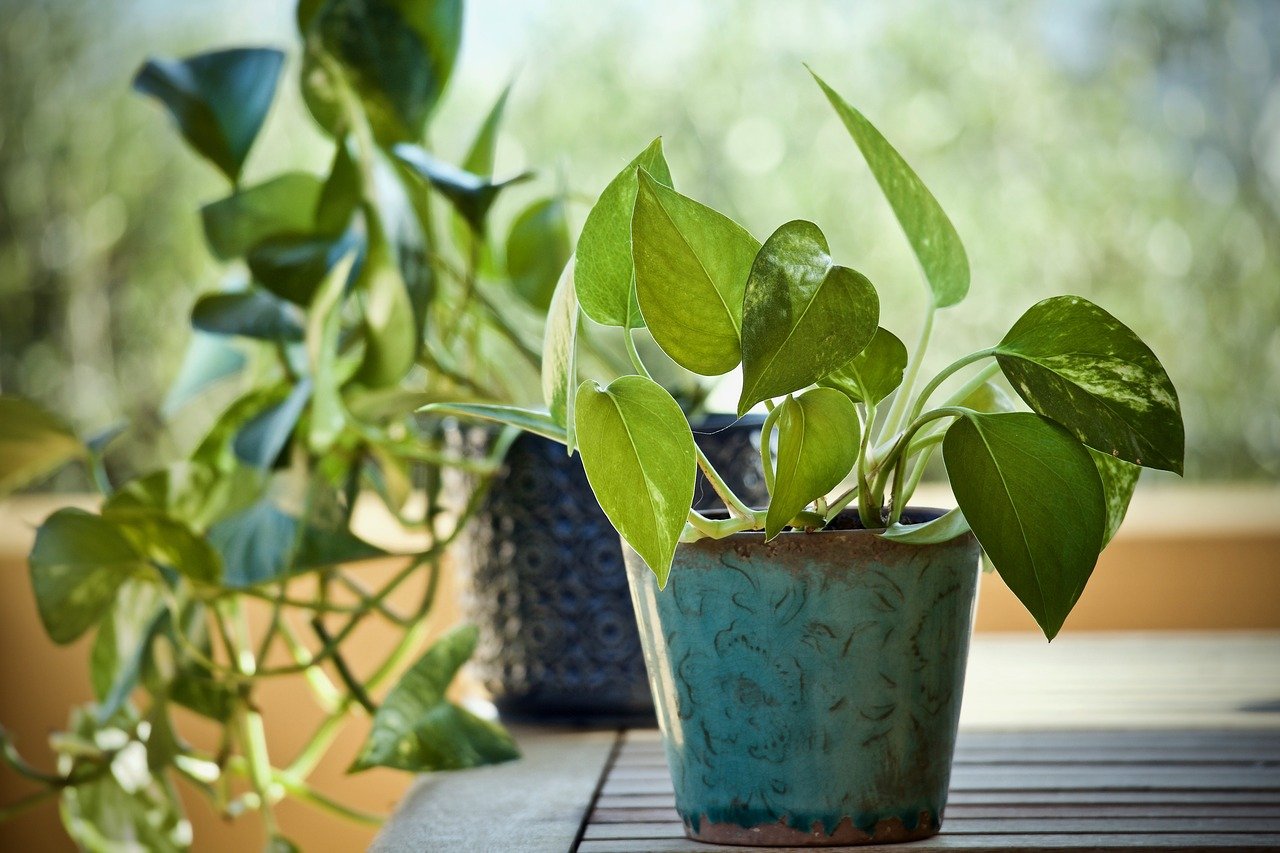
Although it is uncommon to find pests in our poto, that does not mean that you can not have them at some point, such as, when it is grown in a place where the relative humidity is very low and temperatures remain high, or when it is very thirsty.
In these cases, there is always some insect that wants to take advantage of their weakness, such as the red spider -which, in fact, is a mite and not a spider-, mealybugs or aphids. All these they feed on the sap of the leaves, especially from the young, as well as sometimes from the stems.
To remove them, We recommend first cleaning the plant with water to give it a break, and then treating it with an ecological insecticidesuch as diatomaceous earth. If you do not know what it is, tell you that it is one of the best natural products that exist, as it serves to combat practically any pest. Here is a video in which we explain everything you need to know about it:
On the other hand, pothos diseases usually appear when it is being watered excessively, because it is in a pot without holes and/or because it is growing in very compact soil It doesn't drain water well. In any of these conditions, fungi can appear and cause the leaves to turn yellow and then brown.
As a consequence, it will not be enough to apply a systemic fungicide such as No products found. to combat these fungi, but also we will have to make some changes if we are not cultivating it well. For example, it may be that we have to let the substrate dry a little more before watering; change the soil if it does not drain the water quickly, or plant it in a pot with holes.
Needs a bigger pot
If the pothos has yellow leaves for no apparent reason, it could be that it is running out of room to continue growing. It is a plant that can exceed 10 meters in height if it is kept on the ground; that is, it is a large plant, so It is very important that you change the pot from time to time. But how often?
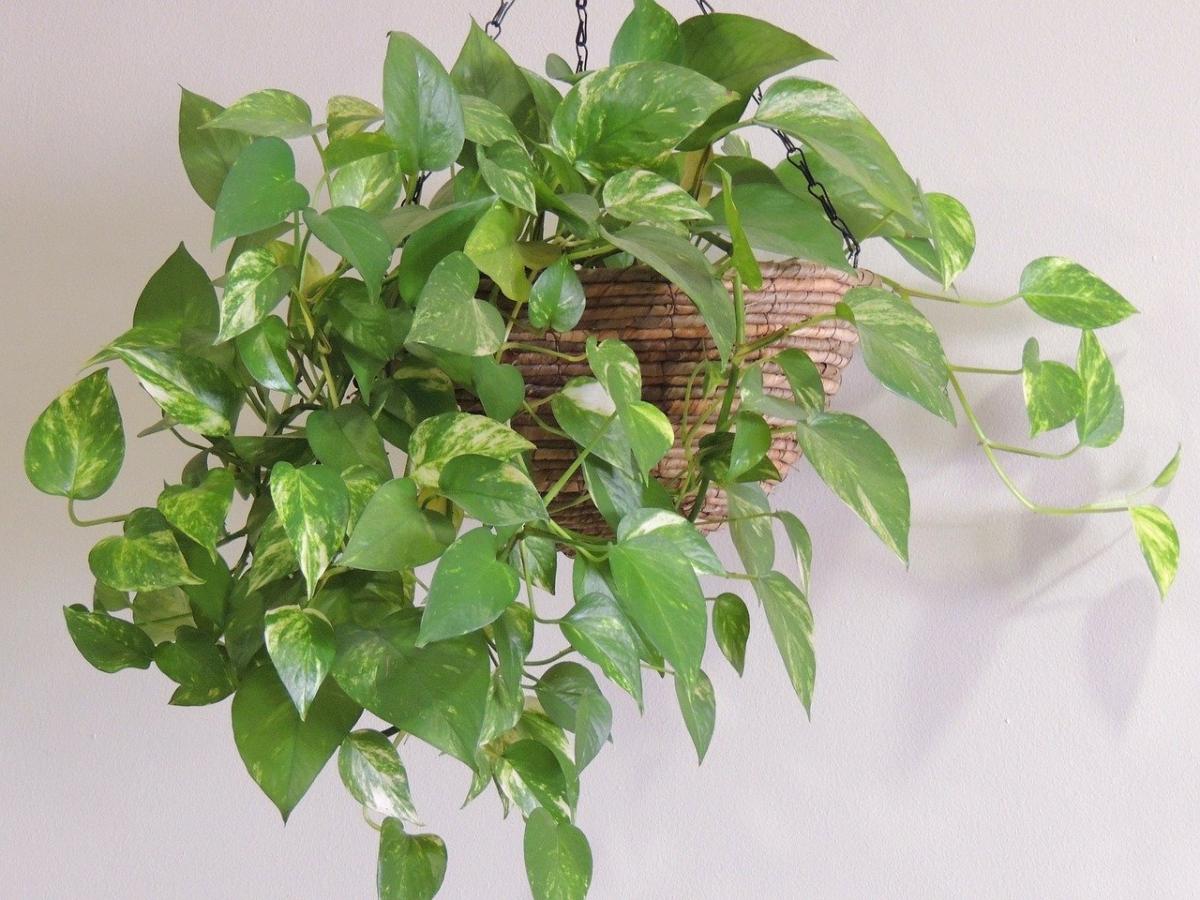
This will depend on your growth rate, but we will know that it needs a transplant if the roots come out of the holes in the pot; if it has not been changed for more than three years, and/or if when looking to remove it from the pot the earthen bread does not fall apart. If it is the case that it requires it, we will plant it in a pot that measures about ten centimeters wider with substrate for green plants that you can buy here.
It is exposed to drafts and/or the relative humidity is low
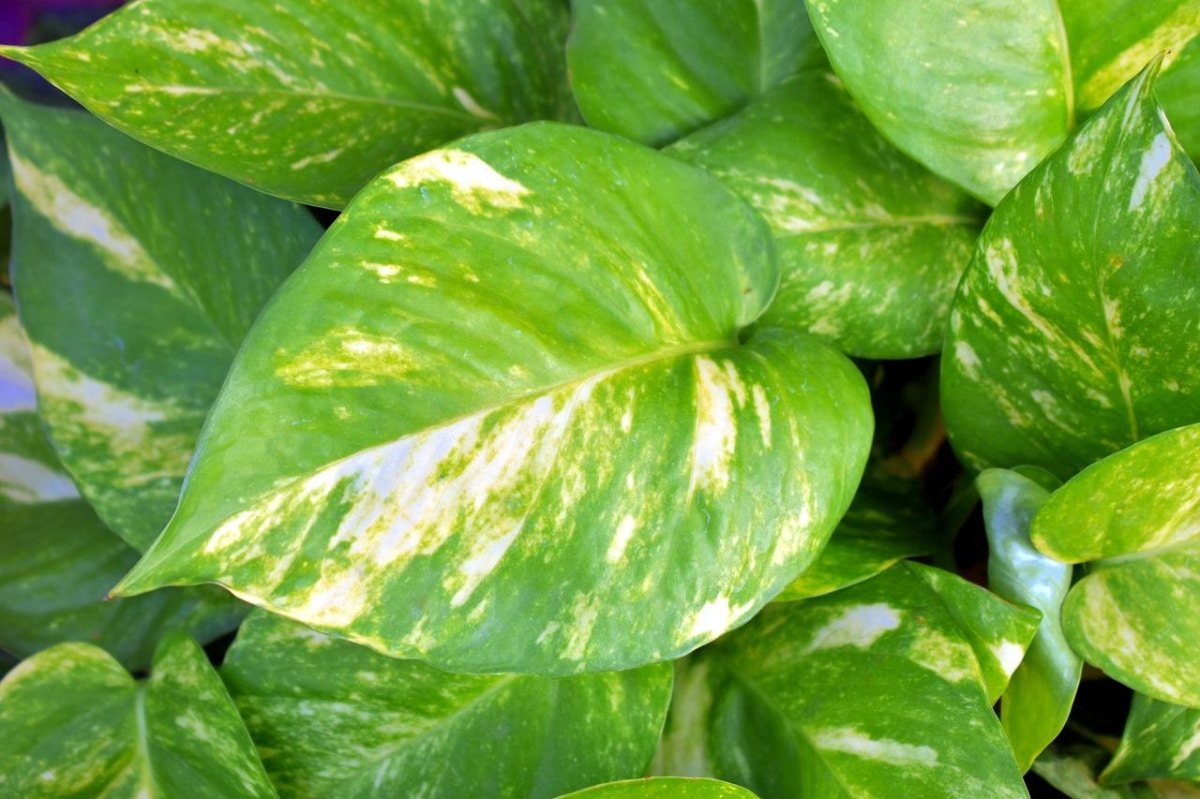
The pothos is a climber of tropical origin that, in order to live and grow properly, It requires heat, air (but not too much) and a high relative humidity, greater than 50%. That is why it grows so well inside homes on the Mediterranean coast of the Iberian Peninsula and on the Balearic and Canary Islands: the conditions are perfect for it, since it is normal for the temperature at home to remain above 15ºC all year round, and the relative humidity always exceeds 50%.
But What happens in those areas that are very far from the sea and/or rivers? In these, the relative humidity inside the house is usually low or very low, so leaves turn yellow as a result of dehydration. To avoid this, they should be sprinkled with water suitable for consumption or rain daily.
Likewise, do not put the pothos where there are drafts, such as those of the air conditioner or fan, because otherwise, even if the humidity is adequate, we would have the same problem: the leaves would turn yellow and our plant would stop looking pretty.
I hope your potho with yellow leaves recovers.